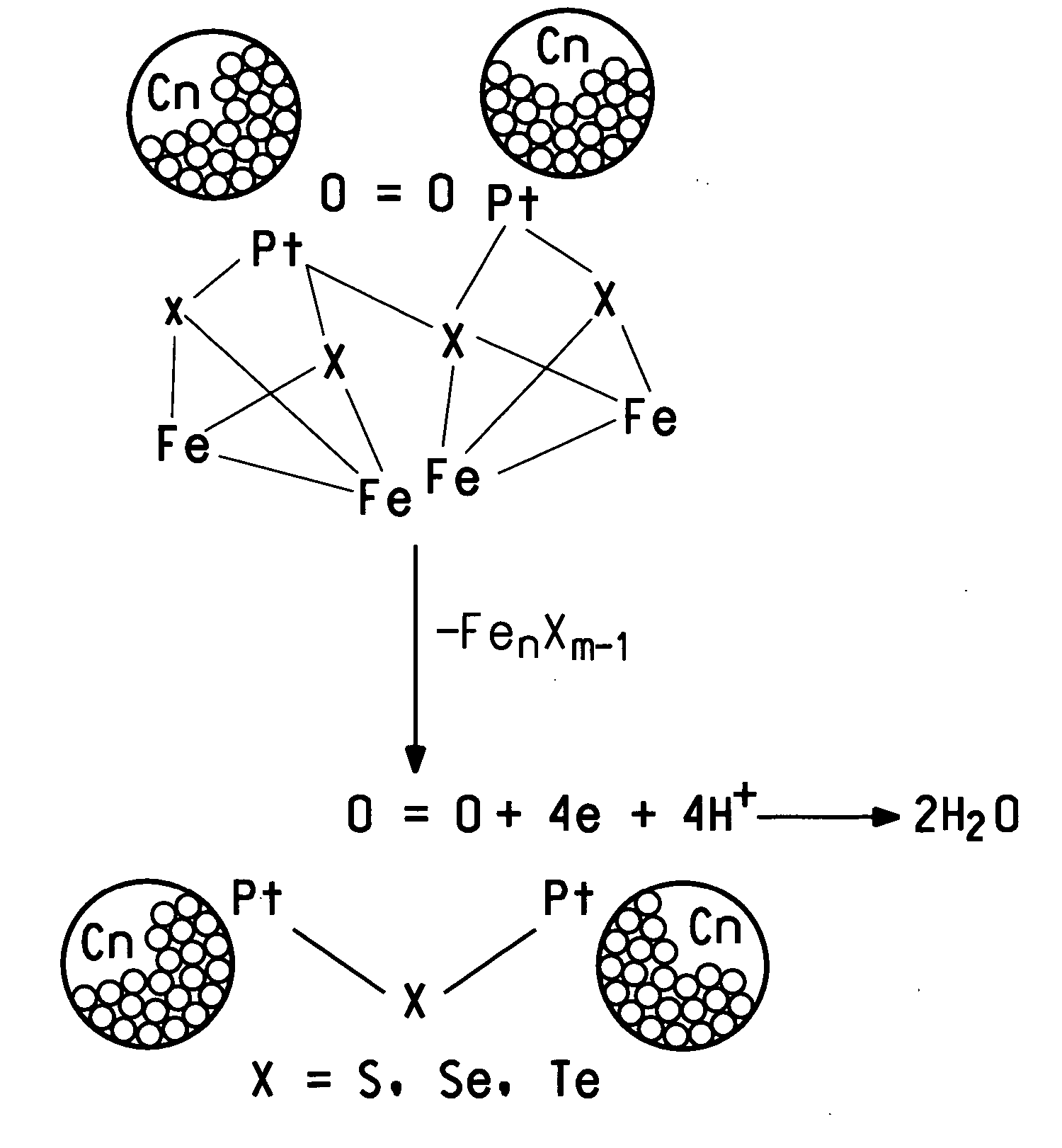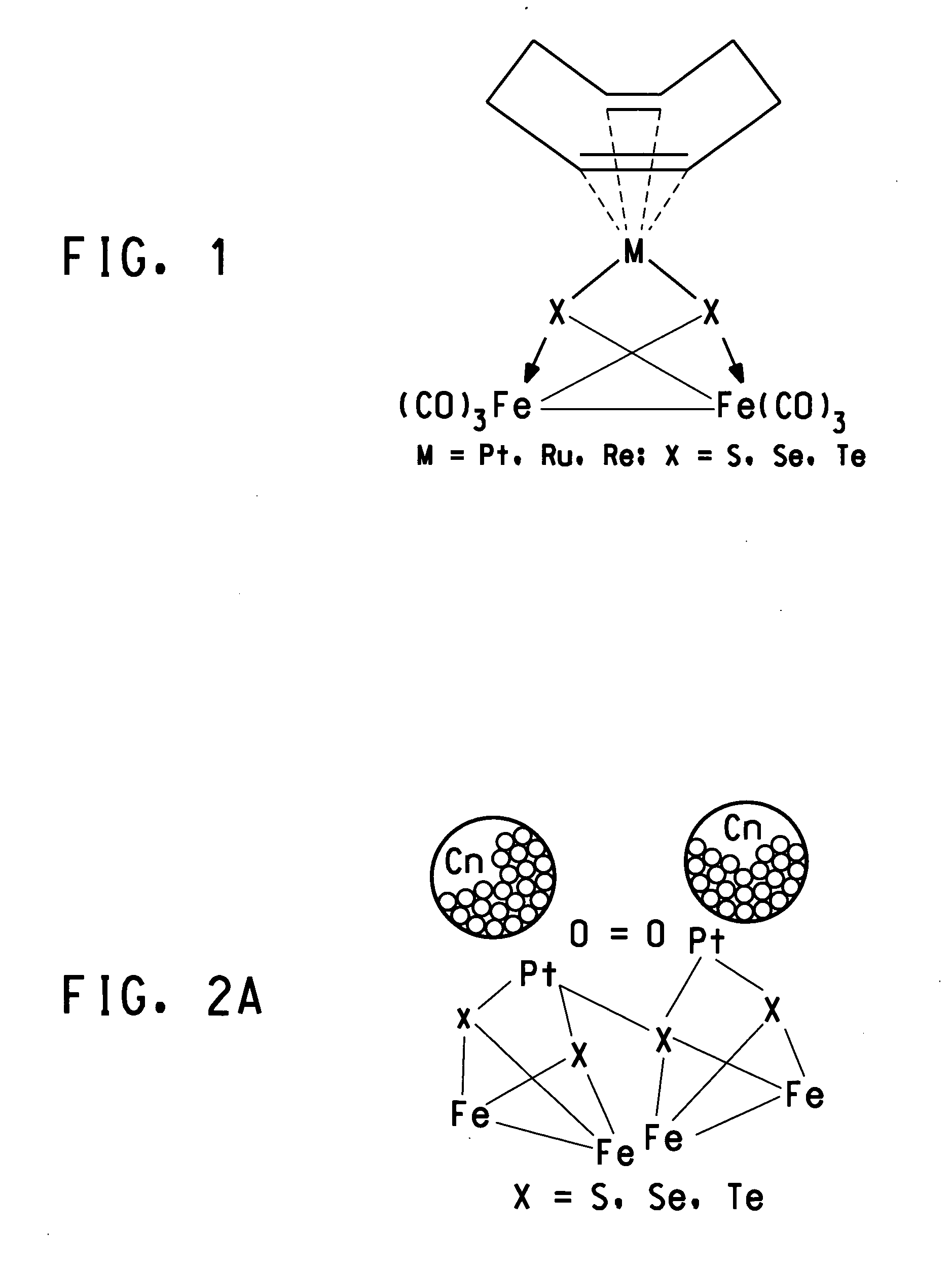Methanol tolerant catalyst material containing membrane electrode assemblies and fuel cells prepared therewith
a catalyst material and membrane electrode technology, applied in the field of catalysts, can solve the problems of reducing both reactant utilization efficiency and fuel cell performance, serious storage and transportation problems, and undesirable crossover of reactant from one electrode to the other, and achieves high catalytic oxygen reduction activity, long-term stability, and definite composition
- Summary
- Abstract
- Description
- Claims
- Application Information
AI Technical Summary
Benefits of technology
Problems solved by technology
Method used
Image
Examples
example 1
A. Synthesis of dicyclopentadienyl-ethoxide-platinum dithizone Complex [(EtOC10H12)Pt(C13N4S)]
[0058] A dark blue-green solution of 0.25 g (1 mmol) of dithizone, C13H12N4S, in 25 ml of CH2Cl2 was added to a red-brown solution of 0.40 g (0.5 mmol) of [(EtOC10H12)PtOEt]2 in 15 ml of CH2Cl2. The solution immediately turned dark crimson. It was concentrated to dryness in vacuum, and the solid residue was extracted with 60 ml of diethyl ether; the volume of the solution was reduced to 5 ml, then it was kept at −10° C. The formed plate like dark red crystals were dried in air to give 0.32 g (0.46 mmol) of etherate. Yield, 46%. For C29H38O2SN4Pt Calc. (%): C, 49.64; H, 5.90; S, 4.56; N, 7.99. Found (%): C, 49.56; H, 5.75; S, 4.90; N, 8.02.
B. Preparation of Catalyst from (C13H12N4S)Pt(C10H12Et) on Ketjen Black
[0059] To the mixture of 55.3 mg of (C13H12N4S)Pt(C10H12Et) and 40.6 mg Ketjen Black, 15 ml of THF were added, and then the mixture was dried in vacuum and the solid was heated at 3...
PUM
| Property | Measurement | Unit |
|---|---|---|
| temperature | aaaaa | aaaaa |
| thickness | aaaaa | aaaaa |
| thickness | aaaaa | aaaaa |
Abstract
Description
Claims
Application Information
 Login to View More
Login to View More - R&D
- Intellectual Property
- Life Sciences
- Materials
- Tech Scout
- Unparalleled Data Quality
- Higher Quality Content
- 60% Fewer Hallucinations
Browse by: Latest US Patents, China's latest patents, Technical Efficacy Thesaurus, Application Domain, Technology Topic, Popular Technical Reports.
© 2025 PatSnap. All rights reserved.Legal|Privacy policy|Modern Slavery Act Transparency Statement|Sitemap|About US| Contact US: help@patsnap.com



